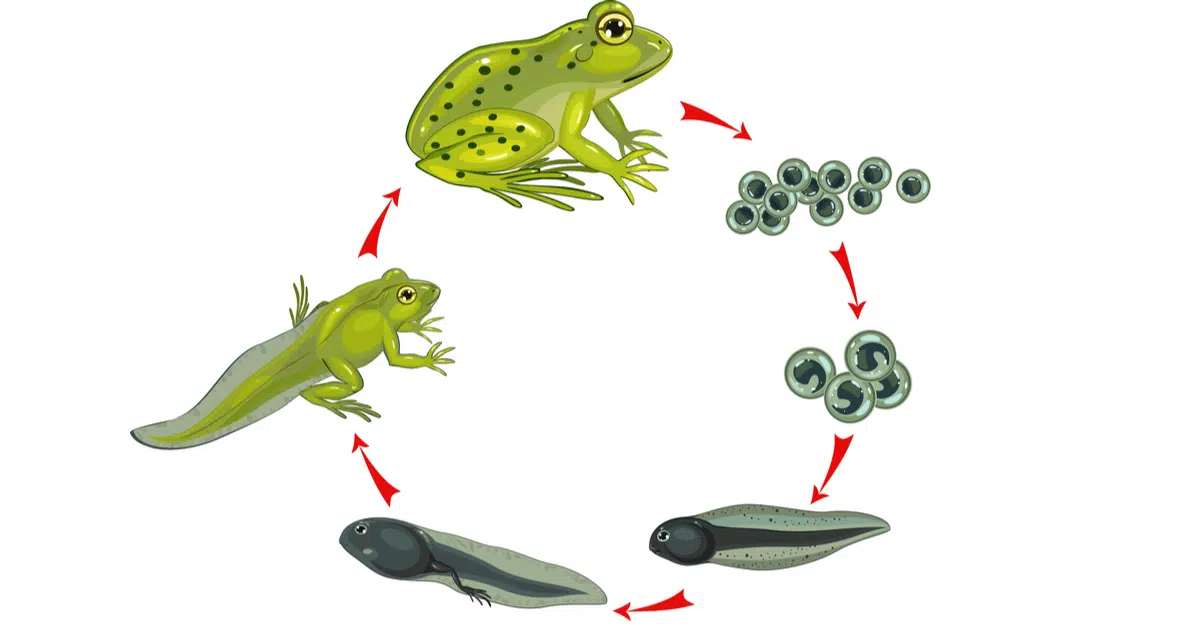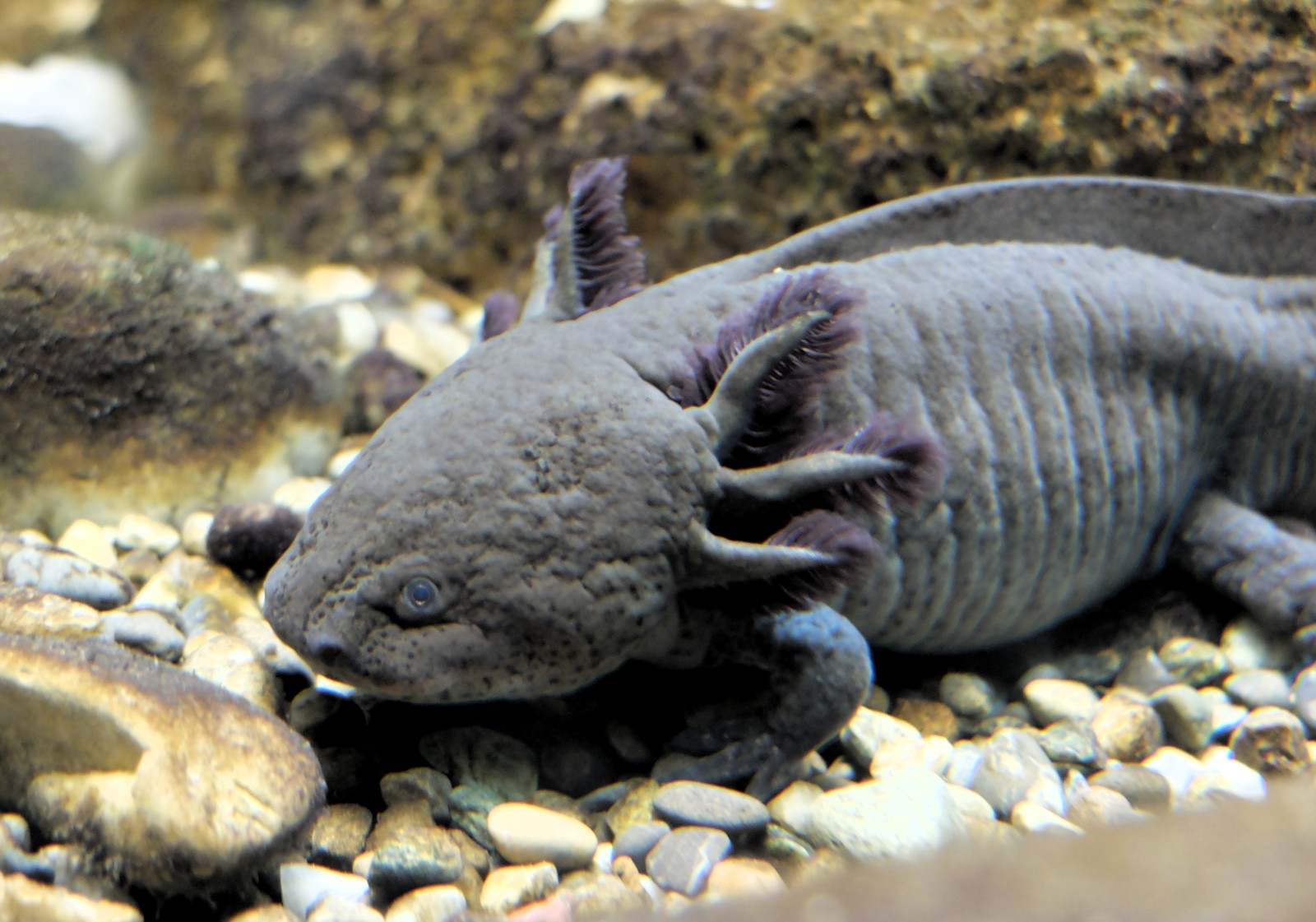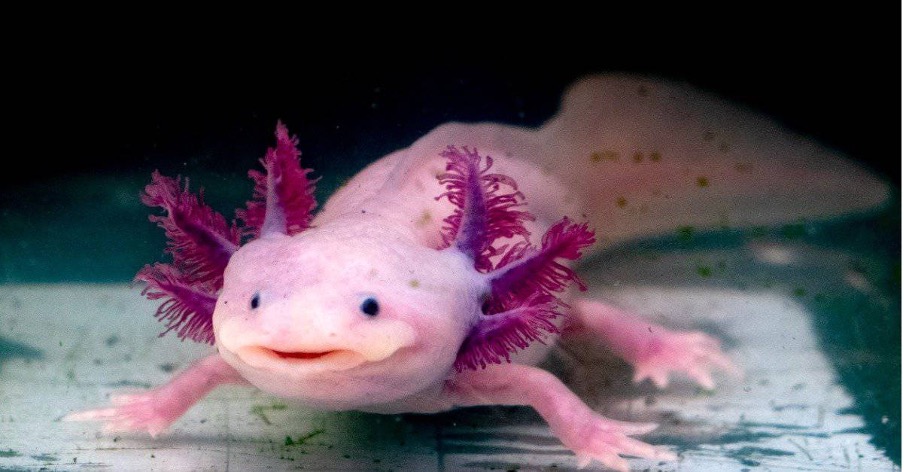By Fanis Michalakis,
Amphibians are a group of animals with special traits that distinguish them from other animals. One of those traits is their skin, since amphibians use it to breathe, alongside their lungs. This group of animals include frogs and toads, salamanders, and newts, each with unique traits to distinguish them. One of the most well-known amphibians is the axolotl, with its appearance in pop culture and its unique appearance.
The axolotl (Ambystoma mexicanum) is a cute salamander living (supposedly) in lakes in Mexico, but, in reality, it mostly lives in aquariums and in homes. The truth is that many want it as a pet because it is so adorable. For some reason though, the Aztecs thought of it as a monster, creating a myth around it. With a life expectancy of 10-15 years, many people choose to have it as a pet over dogs or cats. They typically have dark colours, but through breeding we now have white axolotls that are albino, meaning that they don’t produce melatonin. But apart from feeding them in a glass cage, there are many things we can learn from their studies.
Most amphibians have a life cycle that revolves around four stages. They begin their life in a lake in a soft, translucent egg, out of which comes a tadpole. They feed with algae and have gills to breathe in the water. As they feed, they grow, and when they reach a certain size, the transformation begins. We see their hind legs emerge first, which gives them an appearance of a young frog, which is the third stage of their life, and then they grow their shorter front legs. Then, their tail begins to get shorter, until it atrophies completely, while all its nutrients are absorbed. During the transformation, the amphibian develops lungs and loses its gills, and after 2 weeks, it is ready to go out of the water and walk on land. Their diet changes as well, with many amphibians, like frogs, developing a taste for bugs. This is the last stage of their life cycle, where they become sexually mature adults. This is the typical format, but it can be altered.

There are two kinds of alterations. The first one forces the amphibian to start the transformation early. This is usually because the lake that the tadpole inhabits dries up, and the animal tries to adapt to the loss of water by entering the next stages prematurely. This is a stressful situation, however, and many individuals don’t make it or die shortly thereafter. The other alteration is the case of neoteny, where the animal doesn’t develop the traits of an adult individual, but it is still sexually mature. This is the case with axolotls, as even in adults we see traits of their juvenile stages, like the gills, and webbed feet. Essentially, they begin their transformation, but stop at a certain stage, if the environment allows it. Many have tried to force the transformation, but it is not recommended.
Axolotls have the amazing ability to regenerate lost tissue. Even if one loses an arm or a leg, the heart, spinal cord, or part of the brain, they can regenerate it without permanent scarring. This ability is another reason, apart from their neoteny, why there is so much research done on the axolotl and the mechanisms that give it its regenerative ability, and many believe that many answers about life and the body lie in those mechanisms. Other organisms can regrow lost limbs, like some flatworms (platyhelminthes), but the axolotl is more closely related to us. Lizards can regrow their lost tail, but they can only do it once, and they can’t grow back complex tissue like limbs and organs. This is what makes the axolotl an ideal candidate for stem cell (cells that haven’t specialized yet and can divide themselves) research.

The recent hunts, for axolotls for pet shops, alongside the drying lakes, pollution, invasive species, and capture for research purposes have led to a decrease in number in wild populations, placing the species in the “Critically Endangered” (Cr) class according to the IUCN. This is why there are conservation programs, like monitoring, in place education, and species management to help their populations bounce back.
References
- Murakami Y (2021) Brief ote on the Life Cycle of Amphibians. Entomol Ornithol Herpetol. 10:261
- Axolotl. iucnredlist.org. Available here
- Axolotl. nationalgeographic.com. Available here




